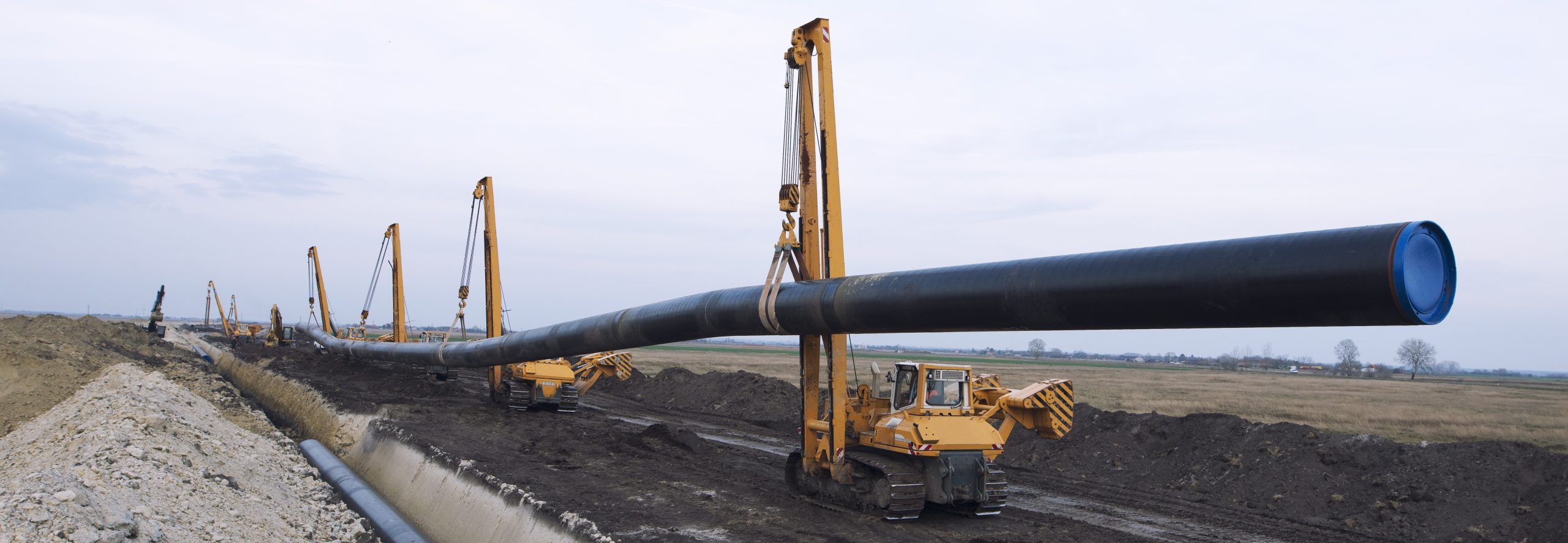A recent rupture in the Keystone pipeline near Fort Ransom, North Dakota, has once again raised concerns about the safety, environmental impact, and oversight of one of North America’s most significant oil transportation systems. The spill, which leaked approximately 3,500 barrels of crude oil, adds to the troubled history of a pipeline that has already seen over a dozen major incidents in its 15-year lifespan.
At Kherkher Garcia, we recognize that these events are not isolated accidents but warning signs of deeper issues related to pipeline construction, maintenance, and regulatory oversight. Below, our petrochemical injury attorneys discuss what you need to know about the recent rupture, its potential consequences, and the legal implications for workers, residents, and communities affected by such disasters.
Keystone Pipeline Rupture
The Keystone oil pipeline, which spans nearly 2,700 miles from Alberta, Canada, to Texas, was shut down on Tuesday following a rupture in North Dakota. The incident led to the release of an estimated 3,500 barrels of crude oil, which was reportedly contained within a rural agricultural field about 60 miles southwest of Fargo. The pipeline’s operator, South Bow, confirmed that the affected segment was isolated and containment efforts were underway, with a focus on safety and environmental protection.
The Keystone pipeline is a major conduit for heavy crude oil, transporting over 624,000 barrels per day in 2024. Its temporary shutdown has raised concerns about potential impacts on fuel supply and pricing, particularly in the Midwest. According to energy expert Ramanan Krishnamoorti of the University of Houston, the disruption could quickly lead to higher prices for diesel and jet fuel, which depend heavily on the unique heavy crude the pipeline delivers. Gasoline prices may also rise within a few days.
An increase in the cost of diesel could have downstream effects, such as higher grocery prices, due to the reliance of food distribution on diesel-powered trucks. While some analysts believe refineries have enough crude in reserve to manage short-term disruptions, a prolonged shutdown of more than a few days could strain supply. Others believe that major refineries have sufficient stored reserves to maintain operations for weeks without major impacts.
As cleanup efforts continue, the incident highlights both the environmental risks and economic vulnerabilities tied to major oil infrastructure. Legal and regulatory scrutiny may follow, especially given the potential for environmental damage and market instability.
Keystone Has History of Pipeline Ruptures
The above rupture is far from an isolated event. The Keystone pipeline, originally built by TC Energy for $5.2 billion and now managed by South Bow, has experienced at least 13 significant spills in just 15 years. One of the most serious occurred in December 2022 in Kansas, releasing nearly 13,000 barrels of crude oil into a creek. Investigations revealed the cause was a faulty weld at an overstressed pipeline bend – a flaw present since installation.
Regulatory oversight of these incidents falls to the Pipeline and Hazardous Materials Safety Administration (PHMSA), which is currently under scrutiny for being under-resourced. Leadership vacancies and federal budget cuts have raised concerns about the agency’s ability to maintain pipeline safety. Experts warn that the ongoing loss of key personnel may further hinder PHMSA’s already strained operations.
Environmental advocates and industry watchdogs point to the pipeline’s history as a sign of systemic risk. The now-defunct Keystone XL extension, canceled in 2021 after years of opposition, further underscores public apprehension around expanding oil infrastructure. As investigations into the latest spill continue, the long history of ruptures raises serious questions about long-term pipeline integrity and oversight.
Who Is Liable for Oil Pipeline Spills?
In the aftermath of any pipeline rupture, one of the most important questions is: Who is responsible? Under federal law, pipeline operators can be held liable for cleanup costs, environmental damage, and harm to private property. The Pipeline and Hazardous Materials Safety Administration (PHMSA) is tasked with investigating incidents and enforcing safety regulations.
However, critics argue that PHMSA is underfunded and understaffed. Recent leadership departures and past federal budget cuts have only compounded concerns about the agency’s ability to ensure pipeline safety. According to industry watchdogs like the Pipeline Safety Trust, PHMSA’s limited resources reduce its ability to proactively identify risks before they become disasters.
If the investigation into this latest incident reveals that the rupture was caused by poor maintenance, construction flaws, or a failure to meet federal safety standards, legal action may be warranted. Affected landowners, nearby residents, and even local governments could have grounds to pursue compensation for damages. A pipeline injury attorney can help victims learn more.
Injuries and Risks Associated with Pipeline Ruptures
When a pipeline ruptures, the consequences can be immediate, far-reaching, and devastating – not only for the environment but also for people living or working nearby. These incidents often release large quantities of crude oil, natural gas, or other hazardous substances, creating dangerous conditions that can result in serious injuries, long-term health issues, and even fatalities.
Fire and Explosion Hazards
One of the most immediate dangers of a pipeline rupture – especially when the line is carrying flammable material like crude oil or natural gas – is the risk of fire or explosion. A rupture can release pressurized fuel into the air or ground, which may ignite due to a spark, static electricity, or nearby equipment. Explosions from pipeline incidents have caused catastrophic injuries including:
- Severe burns
- Traumatic brain injuries (TBIs)
- Broken bones and crush injuries
- Death
These incidents are especially dangerous in rural areas, where emergency response may be delayed and evacuation options are limited.
Chemical Exposure and Toxic Inhalation
Pipeline ruptures can also release hazardous chemicals into the air, soil, and water supply. Prolonged or high-level exposure to petroleum products and chemical additives can lead to:
- Respiratory distress and lung damage
- Skin rashes and chemical burns
- Neurological symptoms such as headaches, dizziness, or confusion
- Long-term illnesses including cancer from benzene or other carcinogens
First responders, cleanup crews, and residents downwind or downstream from the rupture may face long-term exposure risks if cleanup efforts are delayed or inadequate.
Environmental Contamination and Secondary Health Risks
A large spill can contaminate local ecosystems, killing wildlife, damaging agriculture, and seeping into groundwater used for drinking. In these cases, the health risks aren’t always immediate but can emerge months or even years after the incident:
- Contaminated crops and livestock can pose ingestion risks
- Polluted water supplies can lead to gastrointestinal illnesses or chronic disease
- Property values may decline, creating financial stress and displacement
The psychological toll can also be significant. Communities affected by spills often report increased anxiety, depression, and distrust of public and corporate institutions.
Worker Injuries and Fatalities
Pipeline workers face heightened risks during both the initial rupture and the cleanup process. They may be exposed to toxic fumes, unstable equipment, and hazardous conditions with little warning. Without proper training and personal protective equipment (PPE), these workers are vulnerable to:
- Chemical burns
- Inhalation injuries
- Slip-and-fall or machinery accidents
- Post-traumatic stress disorder (PTSD)
OSHA and other safety agencies mandate specific protocols for high-risk work zones like these, but when companies cut corners or fail to maintain safety standards, workers pay the price.
Legal Options for Affected Individuals and Communities
If you or your property has been impacted by an oil spill or pipeline rupture, it’s essential to understand your rights. Depending on the circumstances, you may be able to:
- Seek compensation for property damage (including soil contamination or water pollution).
- Recover damages for economic losses, such as lost crops, business disruption, or decreased property value.
- File a claim for environmental harm under federal or state environmental laws.
- Join a class action lawsuit if a broader community is affected by the same incident.
At Kherkher Garcia, we have extensive experience in environmental litigation and holding powerful corporations accountable for the harm they cause. Our legal team can help investigate the cause of the incident, gather evidence, and fight for full and fair compensation on your behalf. The latest Keystone pipeline spill is not just another news headline – it’s a wake-up call. Communities, regulators, and lawmakers must treat pipeline safety as a priority. When companies fail to maintain their infrastructure or comply with safety standards, they must be held accountable for the damage they cause.
Contact Kherkher Garcia Today
If you live near the Keystone pipeline or have been affected by an oil spill, you don’t have to face these challenges alone. Kherkher Garcia is here to help. Whether you’re a pipeline worker or contractor, a landowner, a business owner, or simply someone concerned about environmental safety, our experienced attorneys are ready to fight for your rights.
We offer free consultations and work on a contingency basis – you don’t pay unless we win your case. Contact us today to learn more about how we can help you after a pipeline spill or environmental disaster. Call us at 713-333-1030 to start a free consultation. Or, you can reach out to us online via our website contact form.
Image by aleksandarlittlewolf on Freepik


